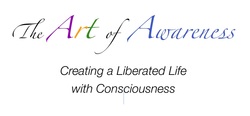An interesting experiment sheds some light on this phenomenon. Scientists studied light waves as they moved through a double slit and realized the light behaved differently when the experiment was being watched. Unobserved, the light moved in waves, but when watched, the light waves collapsed into particles. From this experiment, scientists concluded that observation creates reality…what you are paying attention to influences what you create!
The following parable about two travelers illustrates this:
The wise man responded with a question of his own,
asking the traveler what the people were like in the last town the man visited.
“Ah, they were a terrible bunch,” he replied.
“I was treated horribly and couldn’t wait to leave.”
“Well, then,” responded the wise man,
“I’m sorry to say you will find this town is much the same as the other.
You will want to hurry on through.”
A second traveler arrived and asked the wise man the same question.
When the wise man queried him about his experience in the town he just left,
which happened to be the same town the first traveler visited, this man replied,
“Oh, the people were delightful. I enjoyed my time there very much.”
“Ah,” replied the wise man, “then you will find this town delights you as well.
Enjoy your stay.”
Whatever beliefs we hold will limit and color our creative potentials. They reveal the assumptions we've made about what is possible based on our past experience.
When we have a negative experience, it can be very compelling. Pain is addictive. Our emotions create a chemical reaction that our cells get used to and they want to be fed more of the same. These feeding patterns nurture our stories about "who we are" and "what always happens to us." They anchor our beliefs more firmly in place and our mind eventually becomes trapped in this conditioning.
There is a wonderful teaching story that illustrates the value of an expanded perspective. Variations can be found in Jain, Buddhist, Sufi, Hindu and Bahá’í lore. This parable tells us of a group of blind people who explore an elephant, each feeling a different part (trunk, tusks, tail, etc.) with their hands. From their unique experience they each draw a completely different conclusion about the elephant that is based on some truth, but the actual elephant is much greater than any one person’s interpretation.
Here is another example from the world of science. When technology allowed us to observe very very small particles, scientists realized these tiny particles behaved differently than very large objects and a new type of physics was born. Do the emerging findings of quantum physics mean Newton’s laws of motion are untrue, or are we simply seeing things from a different perspective revealing other possible truths?
As our awareness grows, our perspective expands, and our sense of what is “true” or “real” shifts also. Truth, like all of creation, is constantly evolving. The key to seeing new potentials is to loosen our beliefs so we are able to see an expanded perspective.
There is a myth based on the writings of Joseph Banks, who was a botanist on Captain James Cook's 1770 voyage, that the natives off the coast of Australia paid no attention to the 106-foot-long ship, Endeavour. Perhaps they did not understand the ship could be a threat. Yet another perspective is that the boat was such a foreign concept that the natives did not even see it! In either case, conditioning severely limited their perception.
The ability to focus our awareness on new potentials and attract them into our reality requires we first be able to perceive them! In our next blog, we will explore how to go beyond and sense the unknown possibilities that we may have never seen before.
Until then, may you be in awareness.





 RSS Feed
RSS Feed